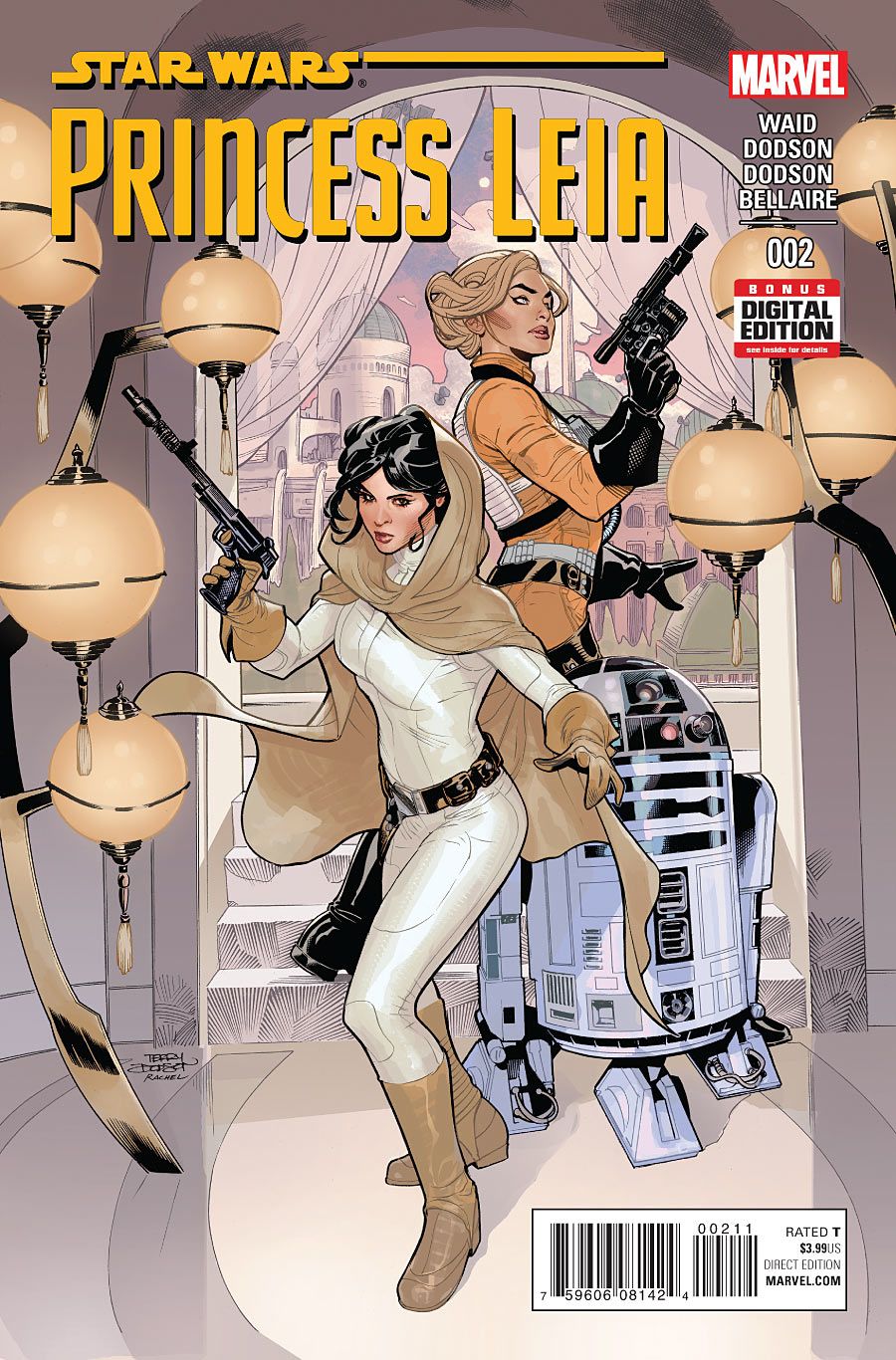"Princess Leia" stills runs a bit flat in its second issue, but the intrigue is picking up. Mark Waid's post-Alderaan Leia is a driven and compelling royal, owning her responsibilities to a home that no longer exists, and her winning partnership with Evaan is fun and fulfilling to read. Terry and Rachel Dodson have their own fresh approach to the "Star Wars" look and feel and, with Marvel's "Star Wars" line-up as crowded as it is, that's an important differentiator for the title. "Princess Leia" #2 gets ever-closer to excellent, though it isn't there yet.
Leia is a capable, determined protagonist with a stubbornly smart foil in Evaan, and their partnership is one of the issue's strongest elements. Evaan deploys "ma'am" in every possible inflection, from support to sarcasm, and it's one of those rare verbal tics that actually works. Leia's interactions with Lord Junn are similarly layered; her reaction to his less-than-honorable actions is surprisingly pragmatic and sly. I didn't expect such an easy out. However, while the relationships in "Princess Leia" are dynamic, the story itself doesn't always read that way.
The slowness isn't an inevitable result of its plot, which is quite fine. Instead, it's caused by the strange pacing of information. Waid still hasn't found the right balance between surprising and guiding the reader, and he doesn't reveal Leia's destinations or motivations upfront. As a result, the travel scenes where Leia and Evaan are walking or piloting their ship feel unmoored from any larger narrative. Rather than wondering what's coming next, the reader is wondering why this scene is even here in the first place. The drama is in seeing characters make decisions and then act on them. Right now, the reader first sees Leia act and then explains the decision she made. Flipping that would be an easy fix to give the story back its momentum.
Terry and Rachel Dodson craft a recognizable "Star Wars" world and, while their Leia certainly looks like Carrie Fisher, she's more of an interpretation than a direct representation. It's therefore easy to divorce this comic from the movies while still feeling like the two speak to each other. Dodson also seems to understand that the universe is as much a selling point as Leia herself. The backgrounds are always fully realized, bustling with aliens or activity, and it helps the reader feel more immersed. Jordie Bellaire's warmer-than-expected colors also add to this sense of liveliness. This is a world of cities and crammed spaceships.
However, Leia and Evaan often look like mirror images of each other. In profile, the two women are drawn with different noses and chins but, when pictured head-on, their faces become indistinguishable. I'm delighted to have two female protagonists, but I'd love for there to be more to physically differentiate them than hair color.
Altogether, "Princess Leia" still needs to work out a few kinks, but it's already much stronger than issue #1. If the series continues to improve this way, it'll become a real must-read.

